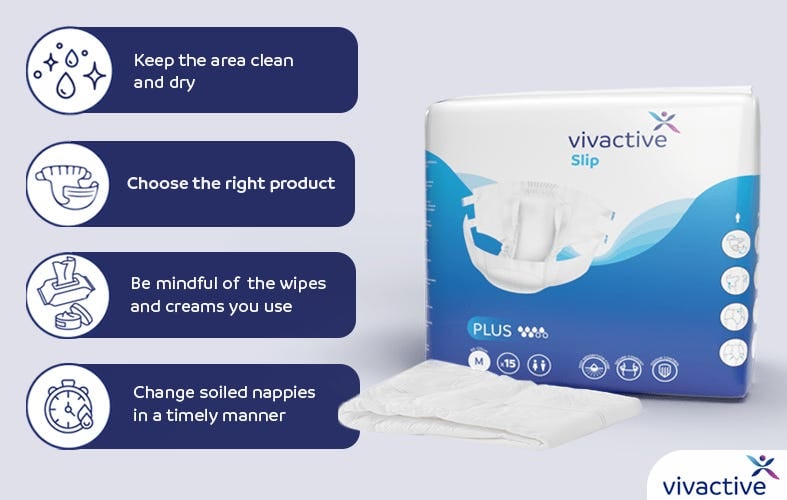
Share this page with friends
Understanding adult nappy rash: how to prevent and treat it
Today, we're diving into a topic that’s not talked about much. Adult nappy rash. It’s fairly common in the incontinence community, but take the right stepsl, and you can make it a thing of the past. Nappy rash can be uncomfortable, but in this article, we’ll take a look at what you can do to get yourself back on track. Let’s get started. Happy, healthy skin, let’s be having you!
What is adult nappy rash?
Tips for preventing adult nappy rash
1. Keep the area clean and dry: One of the most important components in the battle against nappy rash is keeping the affected area clean and dry. Gently cleanse the skin with mild, fragrance-free wipes or warm water and pat it completely dry before putting on a new nappy.
2. Choose the right product: Don’t just settle for any old nappy. Look for breathable, high-quality nappies that provide proper ventilation to the skin, reducing the risk of irritation.Vivactive provides industry-leading nappies at a fraction of the cost of what you find in the supermarket. Vivactive’s online-only approach means all savings are passed on to you, the customer. You can check out the range below:
3. Change soiled nappies in a timely manner: Try not to skimp on changing nappies and incontinence products. Regular changes help keep the skin fresh and reduce the chances of prolonged exposure to moisture, which can lead to irritation. That said, you also don’t need to change the nappy after one small leak either. There’s an element of balance to be found here which mainly depends on the absorbency of the nappy. But remember, always change a nappy straight away if there’s faecal matter involved.
4. Be mindful of the wipes and creams you use: Fragrances and harsh chemicals found in some skincare products can aggravate nappy rash. Stick to gentle products that are specifically formulated for people with incontinence.

How to treat adult nappy rash
- Let the air in: One of the best remedies for nappy rash is fresh air! If possible, let the affected area breathe by exposing it to the air for short periods. This can help speed up the healing process.
- Barrier creams: Barrier creams create a protective layer on the skin, shielding it from moisture and friction. Apply a generous amount of barrier cream to the affected area before putting on a new nappy.
- Stay hydrated: Hydrated skin is happy skin! Drink plenty of water to keep your body well-hydrated, which can aid in the healing process and maintain skin health. While this might seem counter-intuitive if you’re incontinent; dehydrating yourself will actually make incontinence worse. Concentrated, dark, urine will irritate your bladder further. So, stay hydrated!
When to seek professional help
In most cases, adult nappy rash can be treated with home remedies and a little TLC. However, if the rash persists, worsens, or is accompanied by signs of infection such as pus, swelling, or fever, it's time to consult a healthcare professional. They can provide proper diagnosis and prescribe medications or ointments to help clear up the rash. If you’re in the UK, contact your GP or dial 111.





